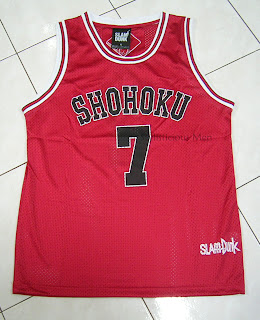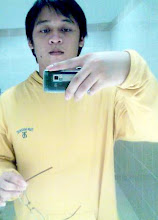Metalcore
Metalcore is a fusion genre combining various elements of extreme metal and hardcore punk. The name of it is a portmanteau of the names of the two genres. The term took on its current meaning in the mid-1990s, describing bands such as EarthCrisis, Deadguy and Integrity. The earliest of these groups, Integrity, began performing in 1988; some modern practitioners of the genre include Killswitch Engage,Underoath, All That Remains, As I Lay Dying and The Devil Wears Prada. Metalcore is distinguished from other punk metal fusions by its emphasis on breakdowns. slower, intense passages conducive to moshing. The genre has had a saturation of bands in the last five years. Sepultura has been credited to "lay the foundation" for the genre.
Black Flag and Bad Brains. Among the originators of hardcore, admired and emulated Black Sabbath. British street punk groups such as Discharge and The Exploited also took inspiration from heavy metal. The Misfits put out the Earth A.D. album, becoming a crucial influence on thrash. Nonetheless, punk and metal cultures and music remained separate through the first half of the 1980s.
Crossovers thrash (1984–1988)
Cross-pollination between metal and hardcore eventually birthed the crossover thrash scene, which gestated at a Berkeley club called Ruthie’s in 1984.The term "metalcore" was originally used to refer to these crossover groups. Hardcore punk groups Corrosion of Conformity, Dirty Rotten Imbeciles and Suicidal Tendencies played alongside thrash metalgroups like Metallica and Slayer. This scene influenced the skinhead wing of New York hardcore, which also began in 1984, and included groups such as Cro-Mags, Murphy's Law,Agnostic Front and Warzone. The Cro-Mags were among the most influential of these bands, drawing equally from Bad Brains, Motörhead, and Black Sabbath. Cro-Mags also embraced straight edge and, surprisingly enough, Krishna consciousness. Other New York straight edge groups included Gorilla Biscuits, Crumbsuckers, and Youth of Today, who inaugurated the youth crew style. 1985 saw the development of the hardcore breakdown, an amalgamation of Bad Brains' reggae and metal backgrounds, which encouragedmoshing. Agnostic Front's 1986 album Cause for Alarm, a collaboration with Peter Steele, was a watershed in the intertwining of hardcore and metal. Converge at Neumo's in Seattle, Washington in 2008.
Metallic hardcore (1989–2000)
Between 1989 and 1995, a new wave of hardcore bands emerged.[4] These included Merauder, All Out War,Integrity, Biohazard, Earth Crisis,[24][25] Converge, Shai Hulud,[26][27][28] Starkweather, Judge, Strife, Rorschach, Vision of Disorder, and Hatebreed. Integrity drew influence primarily from the Japanese hardcore terrorism of GISM and the metal of Slayer, with more subtle elements of Septic Death, Samhain, Motörhead, and Joy Division. And Earth Crisis, Converge, and Hatebreed borrowed from death metal. Shai Hulud's Hearts Once Nourished with Hope and Compassion and Earth Crisis's 1995 album Destroy the Machines was particularly influential. In guitarist Scott Crouse's words, It was a very mixed reaction. I'm often quoted as saying that Earth Crisis was the first hardcore band with a metal sound. Of course we weren't the first, but I think we definitely took it to another level. We heard a lot of, 'These guys are trying to be Pantera,' which we all took as a great compliment. Biohazard, Coalesce, and Overcast were also important early metalcore groups. These groups are sometimes referred to as "metallic hardcore".
Melodic metalcore (1995–present)
In the early 1990s, a third wave of metalcore groups appeared, who placed significantly greater emphasis on melody. These bands combined more modern elements of punk and metal and tend to fuse melodic death metal and hardcore punk/post-hardcore, and in some examples the use of emo. The first bands to have blended such elements such as Killswitch Engage, All That Remains, Shadows Fall, Unearth, Trivium,Bleeding Through and Atreyu emerged and are now the most commercially successful practitioners of metalcore. These groups took major influence, cues, and writing styles from Swedish melodic death metal bands, particularly In Flames, Dark Tranquillity and At the Gates. Melodic metalcore frequently makes use of clean vocals, and is significantly less dissonant than other metalcore. Some of these groups, such as Shadows Fall, have voiced an affection for '80s glam metal. Melodic metalcore groups have been described as "embrac[ing] '80s metal clichés", such as "inordinate amounts of smoke machines, rippin' solos, [and] three bass drums". In the mid-2000s, metalcore emerged as a commercial force, with several independent metal labels, including Century Media and Metal Blade, signing metalcore bands. By 2004, metalcore had become popular enough that Killswitch Engage's The End of Heartache, and Shadows Fall's The War Within debuted at numbers 21 and 20, respectively, on the Billboard album chart. All That Remains' single "Two Weeks" peaked at number nine at the Mainstream Rock Tracks chart in the U.S. The song peaked on the Modern Rock Tracks chart at number 38. Welsh metalcore band Bullet for My Valentine's second album, Scream Aim Fire, went straight to #4 on the Billboard 200, later surpassing this in 2010 with their third album Fever, which debuted at #3. Underoath's fifth album Define the Great Line, released in 2006, peaked at #2 on the Billboard 200 charts, selling 98,000 copies in its first week. The Devil Wears Prada has achieved much commercial success with their most recent album, With Roots Above and Branches Below, peaking at #11 on the Billboard 200 upon its release. Trivium has met with very strong success, making top 25 positions on the charts in several countries, including the USA, and top 10 positions in both Australia and the UK, even making Gold status in the UK. Hatebreed, God Forbid, and As I Lay Dying have also charted. Underoath's album Lost in the Sound of Separation reached #8 on the Billboard 200 and sold 56,000 copies in its first week of sales in the U.S. alone, with Killswitch Engage's self-titled fifth album reaching #7 on the Billboard 200 and selling 58,000 copies.





















































